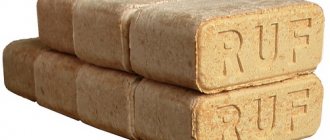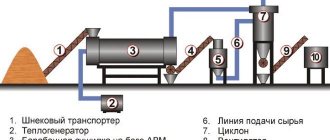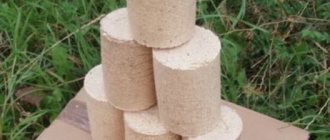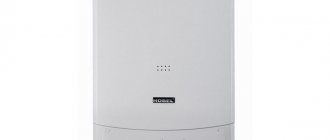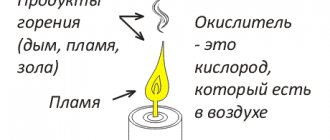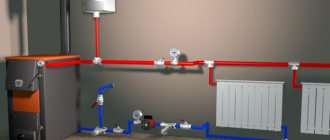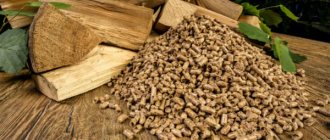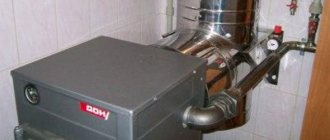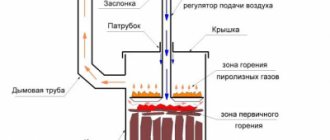Previously, only wood or coal was used as fuel for a stove or solid fuel boiler, but today, thanks to high-tech developments, briquetted fuel is used for these purposes. Various wastes from agriculture, coal production, wood processing industry and peat are used as raw materials for its production. Briquettes are made from sawdust, husks, shavings, straw and other waste. Peat briquettes can be used for heating a private home. We will talk about the characteristics, advantages and disadvantages of this material, as well as the features of its manufacture.
DIY heating briquettes
Is it difficult to make wood heating briquettes at home without special equipment?
To do this, you will need the simplest lever press and a mold for Euro firewood. Sawdust or waste paper can be used as feedstock. Often these components are combined with each other to improve quality. To obtain a homogeneous mass in a peat heating briquette, a binder component is required. It could be water or clay. Then you will need to complete the following manufacturing steps:
- Crushing the feedstock and adding a binder component.
- Filling the form, pressing.
- Drying the workpiece.
Factory heating briquettes RUF are produced using the same technology. The difference lies in pressure and production volumes. At home, to provide fuel for the entire heating period, production time can take from 7 to 20 days.
Equipment and raw materials
You can create fuel briquettes with your own hands from various types of human waste. In principle, you can use any substance that can burn normally. What household waste can become valuable raw materials:
- First of all, wood, sawdust and shavings, wood dust, leaves and tree branches. The type of wood does not play a primary role, but it is better that the sawdust be birch, oak, alder or aspen.
- Straw left over from the harvest of wheat or corn.
- Cardboard and paper. It is much easier to make fuel briquettes from paper yourself than from wood, but the paper version will burn out faster.
- Residues and husks of seeds and nut shells can be good but rare raw materials.
The composition of briquettes can be different, and hence the different adhesive capabilities of the mixture. Depending on the raw materials used, clay is added to some briquettes to help bind the elements, usually in a ratio of 10 to 1.
To create homemade fuel briquettes you will need special equipment. You can order an entire line for home production at once by contacting a specific company, or you can assemble the equipment in parts, because the technology for making fuel briquettes is essentially simple.
The whole technology is based on three stages of production:
- The first stage involves the initial preparation of raw materials. The existing waste should be crushed and crushed to the required consistency so that the composition of the mixture is homogeneous.
- The second stage involves bringing the mixture to a ready-made state by drying. The drying machine removes moisture from the raw material.
- The third stage involves the manufacture of products; here fuel briquettes are pressed on a special machine under high pressure and temperature.
Brown coal
Brown coal
appears in the form of a dense, earthy, woody or fibrous carbonaceous mass with a brown streak, with a significant content of volatile bituminous substances. It often has a well-preserved plant woody structure; the fracture is conchoidal, earthy or woody; color brown or pitch black; burns easily with a smoky flame, emitting an unpleasant, peculiar burning smell; when treated with caustic potassium it gives a dark brown liquid. During dry distillation it forms ammonia, free or associated with acetic acid. Specific gravity 0.5-1.5. Average chemical composition, excluding ash: 50-77% (average 63%) carbon, 26-37% (average 32%) oxygen, 3-5% hydrogen and 0-2% nitrogen.
The photo below shows brown coal.

Brown coal, as the name indicates, differs from hard coal in color (sometimes lighter, sometimes darker); There are, however, also black varieties, but in this case they are still brown in powder, while anthracite and coal always give a black line on a porcelain plate. A significant difference from hard coal is its lower carbon content and significantly higher content of bituminous volatiles. This explains why brown coal burns easier, produces more smoke, smell, and also the above-mentioned reaction with caustic potassium. The nitrogen content is also significantly lower than that of coal.
Literature
- , , “Energy-technological use of fuel”, M., 1956.
- Peat deposits and their integrated use in the national economy, M., 1970.
- The use of peat and depleted peatlands in agriculture, L., 1972.
- Peat in the national economy, M., 1968.
- Lishtvan I.I., Korol N.T., Basic properties of peat and methods for their determination, Minsk, 1975.
- , Peat deposits, M., "Nedra", 1976.
- A. F. Bowman, Soils and the Greenhouse Effect, 1990.
- Bezuglova O.
S. Fertilizers and growth stimulants. Retrieved February 22, 2015.
Articles
- // Great Russian Encyclopedia. Volume 32. - M., 2021. - P. 313-314.
- Peat // Technical encyclopedia. Volume 23. - M.: Soviet Encyclopedia, 1934. - Stb. 746—763
Regulatory documents
GOST 21123-85 Peat. Terms and Definitions
| (fossil fuels) |
| Coal row |
| Petroleum and naphthoid series |
| Main types | |
| Fossil | |
| Renewable and biological | |
| Artificial |
Production
The production process, as we have already said, is quite simple, even though it takes place at home.
To make briquettes for heating stoves with your own hands you need:
- Prepare high-quality raw materials, grind them to the desired consistency, and dry them. In order to improve the quality of combustion, paper can be added to any raw material.
- If necessary, add a binding element (clay, lignin), add water, and load it into the press machine.
- Press the product into a suitable shape at high pressure and preferably high temperature.
- Dry the finished product and, if possible, package it to protect it from external factors. When drying, you can use rags and paper that can draw out any remaining moisture from the briquette.
Having carried out all this work, you will receive excellent fuel, which can be used to easily and quickly heat a bathhouse and heat a house. At the same time, over a long period of time, you will experience the benefits and cost savings from using such eco-drives.
Note that during operation you should try to achieve a briquette moisture content of no more than 10-12% so that they burn well. Industrially produced briquettes have a moisture content of less than 10%.
To make sure of the excellent characteristics of this type of fuel, you can buy yourself some Euro briquettes to try in any store. At the same time, to create a suitable atmosphere, you can sometimes light a fireplace or stove with ordinary wood, because the use of different types of fuel is not mutually exclusive.
Back in the middle of the last century, in many regions of our country, where there were problems with wood, but livestock farming was developed, dung was a popular type of fuel. Then they were supplanted by coal supplies and gasification, but the topic of producing fuel briquettes from manure is still interesting.
Nowadays, manure is most often used in organic farming, as a natural and useful fertilizer. But these are not all areas of use of this natural raw material. We talked about adobe houses, where manure can also be used as a filler for construction briquettes. In addition, organic material is used in the production of biogas, which is also an alternative fuel.
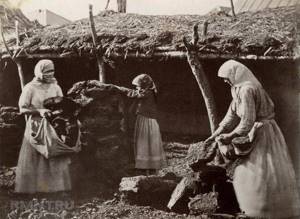
Preparation of dung. Tsimlyanskaya village, 1875–1876
But we will not talk about biogas, but specifically about fuel briquettes made from manure, dung, which were actively used by our ancestors to heat houses with stove heating.
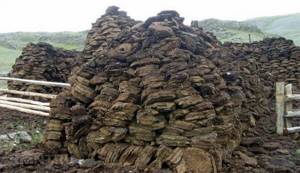
Dung is not just manure, animal waste. This is manure mixed with straw, sawdust, hay, pressed into small briquettes, bricks or cakes, and dried. In this form, manure becomes a good fuel for heating, for example, a greenhouse, a bathhouse or a country house, completely replacing firewood and even coal.
For comparison, here are the approximate energy content of various types of biological fuel:
| Fuel | MJ/kg | kW h/kg |
| Dry manure | 16 | 4,4 |
| Fresh wood with 60% moisture content | 6 | 1,7 |
| Street-dried wood with a moisture content of 20%, ordinary firewood | 15 | 4,2 |
| Straw in bales | 15 | 4,2 |
| Coal | 28 | 7,8 |
As you can see, the specific calorific value of dry manure is even slightly higher than that of firewood that was dried outside. In addition, dung burns with a smoldering flame; users note that their combustion properties are similar to brown coal.

The main advantage of manure as an alternative fuel is its efficiency. If you have your own farm - cows, goats, sheep, rabbits, other animals - then the fuel is absolutely free. You can ask your neighbors who farm and do not actively use manure themselves. A whole truck of manure can be ordered and purchased; it will cost about 11 thousand rubles.
Another plus is that ash from dung will be an excellent fertilizer; it is an environmentally friendly and waste-free fuel.
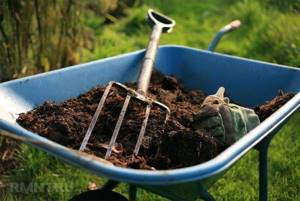
The main disadvantage of dung is that it takes a long time to make such fuel with your own hands; you have to put in a lot of effort. In addition, the very thought of having to tinker with such organic raw materials, animal feces, scares many people away. Note that, according to numerous reviews, there are no unpleasant odors during the burning of dung. Bread was previously baked in Russian ovens using this fuel.
In the process of producing briquettes from manure, of course, there is little pleasant, we agree. But in general, everyone involved in livestock farming is faced with the disposal of organic waste, so why not do it for the benefit of the farm.
Features and types of peat
Peat is an organic rock that is the result of the biochemical process of rotting marsh plants due to excessive humidity and oxygen deficiency.
Peat includes plant fibers, humic acids and various microelements.
If we look at peat as a fuel, taking into account its main characteristics, then it can safely be called young coal. In terms of basic parameters, they are similar, however, peat extraction does not imply the creation of a complex developed infrastructure, because of this, its cost is significantly lower compared to coal.
The main feature of peat is its ash content. It refers to the amount of combustible products that remain after burning a kilogram of fuel. This parameter is measured as a percentage.
The ash content of peat also depends on its origin. Based on this, three types of this breed can be named.
| Type of peat | Peculiarities |
| Lowland | Consists of a large amount of rotted wood residues. It has a very high ash content (for some species it can reach 50%) and low thermal capacity. Because of these characteristics, it is often used in the preparation of natural fertilizers for clay soils. |
| Horse | The basis is the remains of marsh vegetation and sphang mosses. It has a low ash content of 1-5%. This peat is most often used for domestic purposes; it is most often used as the main raw material in the production of fuel. |
| Transition | This is something between lowland and highland peat. |
Of course, peat is not used as fuel in its pure form. After extraction, the natural material undergoes special processing, allowing rational and effective use of all its properties.
Therefore, the following types of peat can be distinguished depending on the characteristics of its processing.
| Type of peat | Peculiarities |
| Shredded/milled peat | This is a placer that is intended to be burned in suspension. |
| Semi-briquette / sod peat | Characterized by a low degree of compression, this fuel product is produced directly on the site of the deposit being developed. |
| Peat briquette | This is a high-calorie product with a significant degree of pressing. Due to the characteristics obtained as a result of processing, it is able to replace coal. A ton of peat briquettes in terms of the volume of heat generated is equal to 1.6 tons of brown coal and 4 m³ of firewood. Peat briquettes are stable in their thermal characteristics, this makes it possible to make accurate calculations of the fuel needs of a certain object. |
You can learn more about the manufacturers of fuel briquettes Ruf, Pini Kay, Nestro and Nilson on this page.
Features of the operation of modern solid fuel boilers
Solid fuel boilers of the modern generation are equipped with a pressurization system and an automatic control unit.
Electronics controls the temperature of the coolant using a sensor installed in the heat exchanger. Depending on the temperature conditions, the automation gives commands to turn on and off the blower, which supplies air to the combustion chamber and facilitates the effective removal of combustion products through the chimney. This regulates the intensity of the fuel combustion process depending on the temperature of the coolant. Thus, the user takes the minimum necessary participation in the operation of the equipment. His concern about how to fire a TT boiler comes down to adding fuel at a certain frequency. After this, the boiler switches to intensive combustion mode. As the temperature rises, the combustion intensity weakens, and when the temperature reaches its maximum, the boiler goes into smoldering mode. After the coolant temperature drops below the set value, the boost is turned on again.

Timely loading of fuel into the TT boiler is the main task of the user, which cannot be automated. The number and frequency of fillings is determined based on the boiler power and the required temperature conditions. If you miss the start date, the boiler will only be able to operate in smoldering mode for a limited time, after which it stops.
It is of great importance how to heat a solid fuel boiler. Today the following types of fuel can be used for this purpose:
To achieve maximum efficiency, you need to know how to effectively heat a solid fuel boiler with different types of fuel.
What is it and what is it made of?
In the bowels of the Earth today there is, according to the most conservative estimates, 250-500 billion tons of peat - and this is almost 3% of the land. At the same time, our country ranks 2nd after Canada in terms of energy mineral reserves. This type of fuel raw material is extremely popular in most European countries. For example, Finland actively uses peat fuel along with other types, and its share exceeds 30%.
In recent years, in order to use peat as fuel, peat briquettes have been produced, otherwise called “pellets”. They are made by pressing dried peat. For this purpose, crushed particles of the fossil are dried in special machines, then briquettes are made from it using a press. This is a fairly durable material made from pressed peat, the pieces of which have the same shape. The calorific value of peat in processed pellets is increased, which brings them closer to those of coal.

In most cases, briquettes are produced close to peat mines, which makes them one of the cheapest and most accessible solid fuels. Peat briquettes have many advantages. First of all, they are easy to light and are also extremely compact, which is convenient for storing them. The high calorific value of peat briquettes makes them a universal fuel option, since they can be used in different models of boilers that operate on solid fuel in boiler installations.
The process of converting gas and fuel oil boiler houses to peat briquettes is associated with a steady increase in prices for hydrocarbon fuels and has recently become widespread. Among other things, experts believe that peat bars are biologically safe fuel, which is one of the main advantages for many modern buyers.
A characteristic of peat is its ash content - this is an indicator of the amount of ash formed after 1 kg of fuel is burned. In this way, it is determined how high quality the raw materials are. Accordingly, the lower this indicator, the higher the quality of the product.
The types of peat used in the production of briquettes can be classified into varieties based on the origin of the fossil.
- The upper one, consisting of sphagnum mosses, parts of plants that grow on the banks of swamps, as well as in the surface layer of soil. This product has an ash content of 1-5%. This fuel raw material is preferably used for heating residential areas.
- Lowland - the main component of the raw material here is rotted wood. The ash content of the product is 50%.
- The transitional/intermediate species is located between the top layer of peat and the bottom. At the same time, it absorbed the properties of both types.
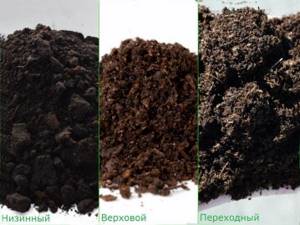
Prices:
| From 1 to 10 tons | Over 10 tons | up to 1 ton | Up to 500 kg. |
| 6500 rub./ton | 5000 rub. | 200 rub./bag | 200 rub./bag |
We put it in 35kg bags or 1t pallets.
You can buy or place an order by phone, or use the “send request” form on the website.
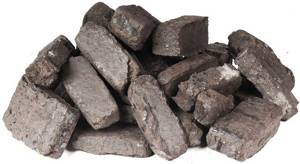
Popular models
The modern market of heating units is overflowing with offers of highly efficient models of boilers operating on peat and peat briquettes. Let's note some of them.
The solid fuel peat boiler from the Ukrainian company Kliver is characterized by impeccable quality, 100% guarantee and high efficiency of up to 92%. It can operate on all types of solid fuel, including peat briquettes. They are used to heat large houses outside the city and industrial enterprises. Kliver is able to heat up to 300 m². The structure occupies only 0.5 m² and does not require a special room for installation. The approximate price of a Kliver with a power of 30 kW is 42,000 rubles.
https://youtube.com/watch?v=FEKdWnu1teo
Peat boiler Aremikas Candle S 18 kW
The Lithuanian boiler Aremikas Candle operates on peat briquettes and is used for heating individual housing construction, as well as for heating industrial premises. The price for Aremikas Candle with a power of about 20-35 kW is 120,000 rubles.
The Czech model Dakon DOR F12 is independent of electricity and has a power of 13.5 kW. It is characterized by a unique new design, an improved mechanism that holds the firebox door, and the absence of a top facing cover for easier fuel loading. Price - about 60,000 rubles.
Technological processes for the combustion of biological fuel are developing every day, peat has excellent consumer qualities, so this fuel is highly valued by scientists and specialists. The extraction and use of peat is considered the most promising direction for energy development in the future.
Classification of briquetted products
In accordance with the listed technologies and equipment used for production, three types of briquettes are distinguished:
- In the form of a brick, obtained by hydropressing under pressure up to 400 bar (about 4 kgf/cm2).
- Cylindrical - about 50 cm long, 10 cm in diameter, using hydro- or mechanical pressing methods with pressure from 400 to 600 bar (4-6 kgf/cm 2 ).
- Piney-key - with radial holes, obtained by processing on screw (extruder) presses, while simultaneously exposed to high pressure (up to 110 bar) and high temperature (250-350 o C). They differ in combustion duration, increased heat transfer, density and resistance to impact.
The density of briquettes is a fundamental value that directly affects calorie content, mechanical resistance, and resistance to moisture.
Briquetted products warehouse
The higher the density, the higher the listed indicators accompanying it. Which fuel briquettes are better is up to consumers to decide, in accordance with their own needs and preferences.
Fuel briquettes RUF
This fuel resembles white or wood-colored bricks in appearance (the shade varies widely). RUF briquettes are made from dry sawdust by pressing under high pressure. As a result, Euro-firewood is born, which can be used in any type of stove. Their distinctive feature is the inscription RUF, embossed on both sides.
Eurobriquettes PINI KAY
An interesting feature of these Eurobriquettes is their unusual shape - they resemble square pencils from which someone has taken the lead. That's why they are called "pencils". In order for it to burn with the release of a large amount of heat, a hole is made in it, increasing the draft. The “pencils” themselves look dark, as they were fired. This procedure makes them more durable and removes excess moisture.
The disadvantage of PINI KAY fuel briquettes for heating stoves is that they are more expensive than firewood and even more expensive than any other types of fuel. But they burn well, releasing a large amount of heat. They are also convenient to transport and store. Thanks to their shape, they are ideal for lighting fireplaces. Some people take them with them into the wild to use PINI KAY bars instead of wood for a fire.
Fuel briquettes from coal and peat
Peat and coal fuel briquettes for heating stoves are made from peat and coal, respectively. The starting materials are formed into small cylinders. The fuel can be used to light stoves and solid fuel boilers. Coal products give a high combustion temperature, but are characterized by high ash content. As for peat fuel, it is ideally suited for long-burning stoves, but it also produces a lot of ash.
Simple cylindrical briquettes
The simplest fuel briquettes for heating stoves are also on sale - in the form of cylinders. They are made from pressed sawdust and small wood waste. All this is pressed under slight pressure using a non-toxic adhesive base, after which the finished bars are sent to consumers. This fuel is cheap, but has one distinct drawback - low strength. It easily disintegrates and crumbles and does not withstand exposure to moisture.
Features of fuel briquettes
In fact, coal or wood briquettes for heating are compressed combustible material that has gone through a pre-treatment stage. To improve energy qualities, they may contain various additives.
Reading reviews about briquettes for heating, you can come to the conclusion that they are much more efficient than traditional types of fuel. This quality is formed during the manufacturing process of European firewood. Using a special technology for processing the source material, an energy carrier is obtained that is characterized by the following qualities:
- High heat transfer rate . On average, 1 kg of coal briquettes for heating has the same energy value as 1.8 kg. simple firewood;
- Low humidity, which does not exceed 10% . As a result, specific heat transfer increases;
- Convenient storage . The round, cylindrical or cubic shape of Euro firewood helps to optimize their storage location;
- Uniform heat transfer . This is very important for the stable operation of a heating system with a solid fuel boiler.
However, there are also disadvantages to consider. Thus, briquettes for heating RUF are sensitive to moisture. Suitable conditions and premises are required for their storage. In addition, the cost of briquettes is higher than that of firewood. Taking into account the energy value, the difference will be literally 5-7 kopecks. at 1 W.
Coal briquettes for heating should not be completely packed in a sealed film. Ventilation gaps are required for air circulation.
Using peat briquettes for space heating
Throughout history, people have used wood and coal to heat their homes and cook food. Thanks to scientific developments, a modern type of fuel has emerged - peat briquettes. This environmentally friendly product does not emit a large amount of smoke, has high heat transfer with a minimal layer of soot on the walls of the chimney.
Peat is an organic fossil material formed from rotting marsh grasses in areas of high humidity and low oxygen. Taking into account the basic parameters and main characteristics, fuel raw materials are similar to young coal, but are mined without the use of complex mechanisms, which reduces its cost.
The main feature of peat is its ash content, which is determined by the amount of combustion products remaining after the combustion of one kilogram of fuel. Based on how much ash remains after combustion, the quality of the fuel material is determined. The smaller it is, the better the fuel. Depending on its origin, peat is divided into several main types:
- 1. The top layer consists of sphagnum mosses and fragments of plants growing on the surface and along the banks of swamps. Due to its low ash content, which is only 1-5%, it is considered most preferable for use in residential areas.
- 2. The low-lying layer contains rotted wood as its main component. It has a high ash content (50%) and low heat transfer during combustion. Most often, such peat is used to fertilize clay soil.
- 3. A transitional or intermediate type is located between the upper and lower layers of peat and can combine their properties.
Peat is a fossil fuel and consists of nitrogen compounds, sulfur, carbon, oxygen, hydrogen, humic acids and plant fibers. Due to the presence of a large amount of oxygen in the composition, the raw material can burn without additional air access.
Before use, peat for heating must undergo special treatment. This process is necessary to achieve maximum effect in using all the beneficial properties of raw materials. During the processing process, several main types of peat fuel are produced:
- 1. Milled or crushed peat is burned in the form of a small scattering.
- 2. Semi-briquettes or pieces are made near peat deposits and have a low level of pressing.
- 3. Fuel briquettes made from peat are distinguished by stable thermal data, which allows you to most accurately calculate the need to heat a particular object. They have a high calorie content, making them a good alternative to coal or firewood.
The production of raw materials on an industrial scale requires high energy costs and special equipment. The extracted lowland peat is crushed by milling and then dried. The humidity level in it is brought to the required parameters, after which the material is pressed under high pressure.
Presses can be hydraulic, screw or mechanical impact. The raw materials are compacted at high temperatures, which reach 150 °C. Thanks to this, the blocks are easily compacted and formed, becoming compact.
The most energy-intensive device in the production of briquettes is dryers. They vary in drying method and design qualities and include the following devices:
- 1. Dispersing and aerodynamic devices. The raw materials are dried in special chambers with hot smoke coming from outside.
- 2. Pneumatic devices. They are moving coils filled with hot air.
- 3. Rotating drums with built-in blades. The raw materials that are being dried are captured and moved using heated air entering the container.
Firewood is made from peat in a less expensive way. Their production involves using the upper layers of peat. The extracted peat is dried in direct sunlight and used to heat technical rooms and boiler rooms. However, such firewood does not have a high calorie content.
https://boilervdom.ru/kotly/po-tipu-topliva/kak-pravilno-topit-tverdotoplivnyj-kotel-torfyanymi-briketami.html
https://gangan.ua.market/articles/18272-kak-pravilno-topit-torfobriketom.html
https://oventilyacii.ru/otoplenie/ispolzovanie-torfyanyh-briketov.html
Comparative characteristics of briquettes
| Type of fuel | Calorific value, MJ/kg |
| Anthracite | 26,8-31,4 |
| Brown coal | 10,5-15,7 |
| Coal | 20,9-30,1 |
| Gas | 27 |
| Peat (humidity 20%) | 15,1 |
| Diesel fuel | 42,7 |
| Wood (humidity 40%) | 6-11 |
| Briquettes (from sawdust) | 16-29,5 |
Each type of briquettes has its own characteristics and advantages. And although all of them are excellent for heating in domestic conditions, it is still worth familiarizing yourself with their characteristics in more detail in order to choose the best option.
Forms of fuel briquettes
Wood briquettes
This type of briquettes is obtained by pressing various wood waste - dead wood, sawdust, shavings, substandard wood. Before pressing, the waste is heated to a certain temperature, as a result of which an adhesive substance, lignin, is released from the cells. Thanks to lignin, briquettes acquire high strength and retain their shape during transportation and storage.
Wood briquettes
The advantages of briquettes over solid wood are obvious:
- the density of briquettes is constant and amounts to 1240 kg/m³, the density of wood depends on the species and ranges from 150-1280 kg/m³;
- maximum humidity of briquettes is 10%, wood – from 20 to 60%;
- when burning a briquette, the volume of ash is 1% of the total mass, wood - 5%;
- when burning, a briquette emits 4400 kcal/kg, wood - 2930 kcal/kg.
In addition, wood briquettes have other advantages:
- pressed wood does not spark when burning and emits very little smoke;
- a constant temperature is maintained in the boiler;
- briquette burning time 4 hours;
- the coals remaining after combustion are excellent for cooking over an open fire;
- the correct shape of the briquettes simplifies their transportation and storage.
Such fuel is sold not in cubic meters, like wood, but in kilograms, which is much more profitable.
Prices for Eurofirewood Briquettes
Eurofirewood Pini-kay
Coal briquettes
Coal briquettes
This type of briquettes is obtained from screening out coal. First, the screenings are crushed, mixed with a binder, and then compressed under high pressure.
The main properties of such fuel:
- coal briquettes do not smoke;
- do not emit carbon monoxide;
- burning time in conventional boilers is from 5 to 7 hours, with controlled air supply – 10 hours;
- suitable for use in domestic conditions;
- have a compact shape;
- when burning they release 5200k/cal and maintain a constant temperature;
- maximum ash volume – 28%;
- have a long shelf life.
Coal briquettes are the most optimal fuel in harsh winters, when pressure drops in domestic gas systems due to low temperatures. Briquettes burn at any temperature, the main thing is that there is a constant flow of air.
Prices for WEBER coal briquettes
WEBER coal briquettes
Peat briquettes
Peat briquettes
To make briquettes, peat is dried, heated and pressed under high pressure. The result is neat, light, dark-colored bricks. With an adjustable air supply, peat briquettes maintain the temperature for 10 hours, which is very convenient for heating the house at night.
Basic properties:
- suitable for all types of ovens;
- heat transfer is 5500-5700 kcal/kg;
- ash volume 1% of the total volume of the briquette;
- affordable price;
- minimum amount of impurities in the composition.
The ash that remains after fuel combustion can be used as an effective lime and phosphate fertilizer. For many owners of private households, this factor is decisive when choosing heating briquettes. Since peat is a flammable substance, it should be stored at a safe distance from open fire and heating devices. Even dust spilled from the packaging can ignite and cause a fire, so briquettes must be handled correctly.
Husk briquettes
Husk briquettes
Sunflower husks, buckwheat and rice husks, rye waste, oats and even straw are widely used to make fuel briquettes. The most common are briquettes made from sunflower husks, since the production of oil leaves a large percentage of waste. The maximum moisture content of husks for pressing is 8%, which increases heat transfer and reduces combustion time.
Sunflower briquettes
Specifications:
- briquette density is 1.2 t/m³;
- heat transfer – 5200 kcal/kg;
- ash volume from 2.7 to 4.5%.
Additional benefits:
- absence of harmful impurities;
- affordable price;
- long burning time;
- ease of storage and transportation.
Homemade granulator
To make a machine for producing pellets with your own hands, you will need a drawing. Often problems arise already at the stage of searching for it, since masters rarely share the secrets of their work. Some of them offer to purchase a ready-made machine from them, but its cost will be high. To create a homemade granulator you will need to make several main components.
If this is not possible, then a round blank will have to be cut from metal with a thickness of 20 mm. Then a mounting hole with a groove is marked on it and drilled for fixation on the electric motor shaft. Holes for pressing should have a conical shape. It is impossible to make them without a special cutter. It should also be said that the outer diameter of the part can be any, and the larger it is, the higher the productivity of the equipment will be.
The body can be made from pipe or welded from sheet metal. Its internal diameter must correspond to the size of the matrix, ensuring its rotation with minimal clearance. To simplify maintenance of the granulator, the housing should be made dismountable. To make a pellet machine with your own hands, you will need a gearbox. This unit is installed at the bottom of the equipment and is designed to transmit rotation to the working vertical shaft with a frequency of 70−100 rpm.
This design of equipment for the production of fuel pellets is not the only possible one. Having sufficient skills and access to professional metalworking equipment, it is quite possible to make a granulator yourself. In such a situation, the main problem will be the search for accessible and cheap raw materials.
Eurodrova
The briquette composition is subjected to strong pressing and drying. Burning fuel briquettes does not harm human health, since they do not contain chemicals. There are three main forms of fuel briquettes: ruf, pini-kay and nestro.
They differ from each other only in maximum density, which directly depends on the shape, but there are no fundamental differences in the composition and calorific value of the material. Advantages of fuel briquettes:
- Low humidity and high density of the material, which ensures high heat transfer and long burning time (up to 4 hours).
- Compared to firewood, they are more compact to store due to their regular geometric shape.
- They do not spark or shoot when burned, emitting a minimal amount of smoke.
Flaws:
- Briquettes take a long time to warm up due to the high density of the material and leave a fairly large amount of ash.
- In the room where the stove is heated with briquettes, there is a pungent, specific burning smell.
- Fuel briquettes have very low moisture resistance and crumble under improper storage conditions.
- They are very unstable to mechanical damage, which makes them impossible to use further.
- Lack of aesthetic component when lighting a fireplace. Fuel briquettes can burn with a barely smoldering flame.
Date: September 25, 2021
Features of wood burning
To ensure high-quality heating, you need to know how to heat a solid fuel boiler with wood efficiently and economically. For kindling, chips are laid down, on top of which you need to place 3-5 firewood with a diameter of up to 15 cm. It is recommended to lay crumpled paper between the chips so that the wood flares up faster.
After the first fire has ignited, the firebox is filled with large firewood. To achieve the most complete and efficient burning of wood, you can place 1-2 large logs in the firebox at intervals of 30-40 minutes. In addition, this method will help reduce firewood consumption.
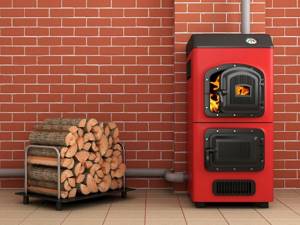
When the firebox is completely filled with large firewood, an ordinary modern solid fuel boiler is capable of maintaining fairly intense combustion for 3-4 hours. Long-burning boilers operate on one burner even longer. It is generally not recommended to burn such models with small wood, which does not burn completely due to increased gas emission. The optimal size of logs in diameter is 15-30 cm.
If you figure out how to properly heat a TT boiler, then the choice of firewood is of great importance. Wood moisture content should not be higher than 20%, otherwise the efficiency of the equipment will be lost. In some cases, to increase the burning time, damp wood is specially placed in the firebox, which takes longer to burn. However, it must be taken into account that this leads to increased release of tar, which settles on the walls of the firebox and on the chimney, and this causes deterioration in draft. As a result, the boiler has to be cleaned more often. In order for firewood to have an optimal level of humidity, it must be dried under a canopy for approximately 1.5-2 years before use.

